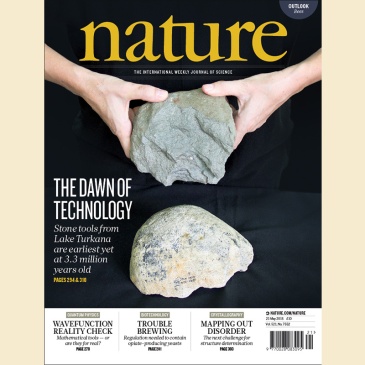‘Archaeological Origins’ conference, Musée de l’Homme, Paris (June 2017)
On the 8th and 9th of June 2017, several WTAP members included on the ANR (Agency National de la Recherche, or French National Research Agency) funded project ‘Archaeological Origins: the emergence and evolution of the first cultures‘ met with invited guests in the wonderful Jean Rouch auditorium at the Musée de l’Homme in Paris to present and discuss new research relating to the Lomekwi 3 archaeological discovery.
The international symposium was financed by the ANR and was open to the general public. Attendees enjoyed the chance to hear about key aspects of the work conducted at the Lomekwi 3 site since 2011, in a series of talks peppered with presentations by specially invited speakers that placed the known origins of technology in fuller scientific context. More information about the colloque is available in French here.
On Day 1 of the conference, after a welcome coffee and brief introduction to the meeting and Archaeological Origins project by directors Sonia Harmand and Sandrine Prat, the scientific presentations began with an overview of the history of the WTAP and the discoveries it has made to-date (by WTAP founder Hélène Roche). Against this background, the discovery of Lomekwi 3 and the technological uniqueness of the stone tool assemblage (Sonia Harmand), and the site’s geological and chronostratigraphic context (Craig Feibel) gave the critical evidence on which the site’s evolutionary significance rests. Invited speaker Zeray Alemsaged spoke about his team’s recovery of 3.4 million year old bones with probable stone tool cut-marks at Dikika (Ethiopia), arguing for a fundamental change in how we think about the roots of early hominin tool use.
Delving into more detail, experimental research looking at the production of Lomekwian stone tools using passive hammer and bipolar techniques undertaken by Michel Brenet (who sadly could not be present) was outlined by Hélène Roche. Invited speaker Vincent Mourre then provided a more philosophical aspect to the proceedings, using a fable about six blind men and an elephant as a metaphor for identifying stone tool production methods and techniques. The following two talks examined aspects of production and tool function on the Lomekwi 3 artefact collection using microscopes: the marks created on Lomekwi 3 tools by pounding activities and their comparison with other sites across West Turkana (Adrian Arroyo) and; signatures of microscopic use-wear on the edges of Lomekwian flakes and cores as a result of use (Nicholas Taylor). Invited speaker Tomos Proffitt rounded off the first day of talks with some Primate Archaeology, particularly showcasing the results of his sobering work on capuchin flaking behaviours in Brazil.
Day 2 focused on placing the Lomekwi 3 technology into more detailed environmental and paleontological context. The morning started with an exploration of how tectonic activity has affected the hydrology, form and size of the Lake Turkana watershed over time, and the conditions under which Pliocene and early Pleistocene archaeological sites formed (Xavier Boës). At the site scale, invited speaker Vincent Aright then proffered a masterclass in the topographic techniques used in the field by the WTAP to map, visualise, and correlate the excavated artefacts with geological strata and dateable volcanic ash layers. Subsequently, two talks looked at what faunal remains can tell us about the past environment of the Turkana Basin (Jean-Philip Brugal), and the fossil evidence for early hominins found to date on the western side of the lake (Sandrine Prat).
After lunch, two presentations by Guillaume Daver and invited speaker Blandine Bril examined in more detail several critical issues that link directly the Lomekwi 3 tools with the human ancestors who made them – particularly experimental work reconstructing early hominin anatomy, motor skills, and the actions involved in stone knapping. The conference was wrapped up by two concluding and closing talks – the perspective of the project’s directors Sonia Harmand and Sandrine Prat, and of Rob Foley, who brilliantly summarised both the significance of the discovery and the subsequent field research and lab work undertaken.
















